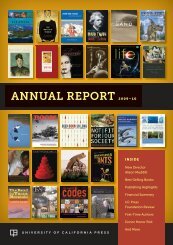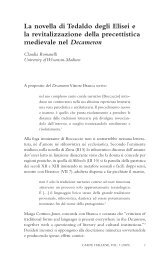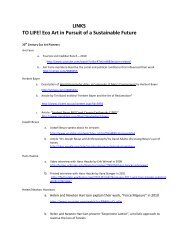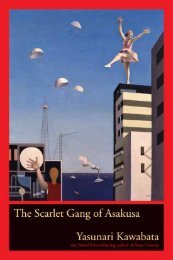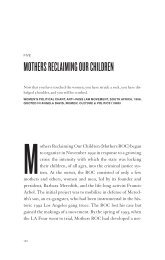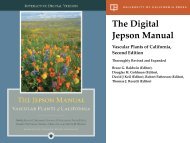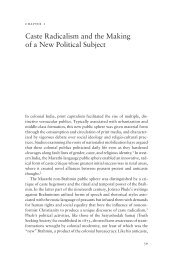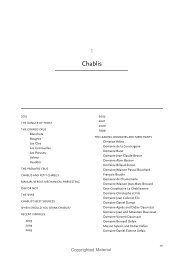Read Chapter 1 (PDF) - University of California Press
Read Chapter 1 (PDF) - University of California Press
Read Chapter 1 (PDF) - University of California Press
Create successful ePaper yourself
Turn your PDF publications into a flip-book with our unique Google optimized e-Paper software.
east harlem 15<br />
North radically transformed the demographics <strong>of</strong> cities like New York,<br />
and upper Manhattan became an enclave community from the first years<br />
<strong>of</strong> the twentieth century. The reputation <strong>of</strong> Central Harlem as the capital<br />
<strong>of</strong> Black America is now well ensconced, and at the turn <strong>of</strong> the century<br />
Fifth Avenue was not the discrete boundary it is today. East Harlem,<br />
though at the time already considered a European ghetto with thousands<br />
<strong>of</strong> Irish, German, and Italian settlers, was close enough to the excitement<br />
<strong>of</strong> the Harlem Renaissance for thousands <strong>of</strong> African Americans to put<br />
down roots. Indeed, Central Harlem remained the center <strong>of</strong> African<br />
American attention, even as Italians and then Puerto Ricans established<br />
the Fifth Avenue boundary throughout the twentieth century.<br />
Lucille represents the African Americans who have long debated the<br />
Puerto Ricans as to the ethnic character <strong>of</strong> East Harlem and its relationship<br />
to Central Harlem. Since 1990, with urban renewal driving more and<br />
more African Americans out <strong>of</strong> Central Harlem, non-Hispanic black residents<br />
have added more than six thousand newcomers, while Puerto<br />
Ricans have actually lost more than seven thousand. 10 This leaves East<br />
Harlem Puerto Ricans at a numerical disadvantage compared to non-<br />
Hispanic black residents for the first time since the 1940s. Lucille’s story<br />
examines this slow-burning rivalry between African Americans and<br />
Puerto Ricans, revealing the cultural abdication from East Harlem by<br />
many African Americans who still feel a stronger connection to Central<br />
Harlem and exposing the peculiar constructions <strong>of</strong> racial identity that<br />
blur the boundaries between two groups bent on division.<br />
“116th Street: The Mexicans” introduces Maria. An eager young<br />
woman with an eye to the future, she scrambled across the Arizona<br />
desert in the mid-1990s to earn funds to build her mother a home in Mexico.<br />
After a brief stint as a housekeeper in New Jersey, Maria moved in<br />
with friends in East Harlem. She leased a chair in a neighborhood barber<br />
shop and began putting a decade <strong>of</strong> salon training to use. Now she shares<br />
a one-bedroom apartment <strong>of</strong>f Second Avenue with two brothers, a<br />
cousin, and a husband she met in the neighborhood. The steady stream<br />
<strong>of</strong> relatives through their cramped apartment joins the larger flood <strong>of</strong><br />
Mexican immigrants to East Harlem—a promising sign for Maria’s business<br />
as non-Mexicans in the neighborhood <strong>of</strong>ten refuse to sit in her chair.



